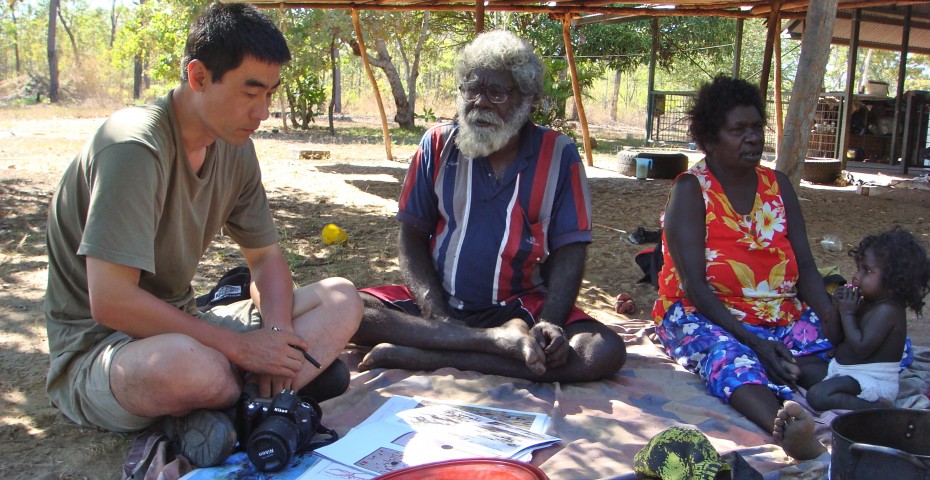REVIEWS
ELIE CHOURAQUI, jury chairman of the Pacific International Documentary Film Festival 2012 talks about OCHRE AND INK.
With the 1st Special Prize, Ochre and Ink, there is something fascinating about seeing a Chinese man, who represents the most important nation in the world, population-wise in any case, who finds himself facing an Aborigine, who to him is a survivor of a nation which was almost decimated, massacred. These two men share their humanity through art, by blending their talents. I thought it was a film which, in addition to all its qualities, is significant because it proves that everything is possible: that all men, wherever they come from, if they are willing, can live together.
‘Ochre and Ink, Sino Aboriginal blend in Arnhem Land’ by Manon Hericher
Aesthetically fabulous, humanely wonderful and artistically captivating, Ochre & Ink was unanimously well-received by the audience in the Little Theatre early yesterday afternoon at the projection-meeting with James Bradley, the director of the film. What an ambiance!
Xiaoping is Chinese. He is ageless but has already collaborated with Aboriginal artists for 23 years. If James Bradley was unable to narrate all of the fascinating life of this man captivated by the art (the art of living too) of the aborigines, it is due to lack of time. They therefore decided together to focus on this moment in time, in particular the absolutely amazing work undertaken with Johnny Bulunbulun, an Aboriginal artist from Arnhem Land, to reconcile the respective inspiration of the two artists on rice paper or tree bark, each bearing ancestral traditions inextricably embedded in them.
A deep friendship is the fruit of this collaboration, which extends to family and wider still to the Aboriginal artist’s community. When Johnny Bulunbulun suddenly died aged 64 years old, without having been able to make the journey to China as planned, to discover Xiaoping’s culture first of all and also assist with the opening of their exhibition at the museum in the capital Beijing (a real success with 330,000 visitors), his widow and son took the plane to represent him outside their own country.
If the Chinese artist received abundant criticism at the beginning of his Chinese Aboriginal creation, beginning with being racist because he painted Aborigines, his tenacity, perseverance and especially his talent earned him international recognition today, from the farthest reaches of Arnhem to Beijing, via Melbourne, where he still lives.
His inspired work, of great sensitivity and extraordinary finesse unquestionably gave the Polynesian public the desire to host the exhibition. For the time being, negotiations are ongoing to transport it from Melbourne, where it was shown from July to October last year. Whilst waiting for it to finally come to Tahiti, the artist wants to come back to do some work in Polynesia. ‘I like not only the landscape but also the people from here,’ he assured.
The Sun Herald – The Guide, 19 February 2012, Author: Bridget McManus
Artscape: Ochre and Ink RATING: 4.5/5
THE UNIQUE relationship between Chinese artist Zhou Xiaoping and the indigenous artists of Arnhem Land is beautifully told in this documentary, which traces the connection from Xiaoping’s extended visits to outback communities in the 1980s, where he met the late celebrated artist John Bulun Bulun, through to the Beijing exhibition he shared last year with his recently deceased friend and mentor. Xiaoping’s telling of their mutual exchange of ancient traditions is refreshing in its lack of cultural awareness and fascinating in terms of technical artistry.
